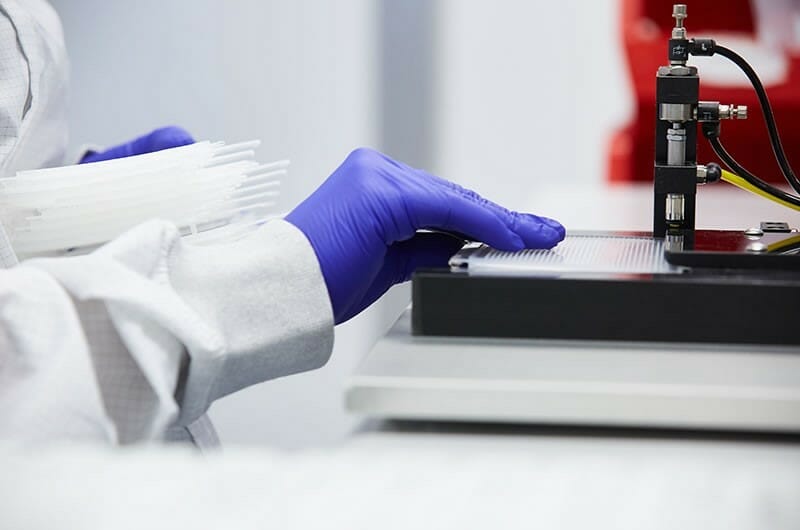Meeting supply chain challenges is best achieved by working with a single supplier. The right vendor will successfully execute all stages of the process, from prototype to distribution, with the benefit of immediately adjusting their processes to find efficient solutions at every stage of the process.
Learn about four reasons why you should use lean manufacturing to optimize your supply chain with:
- Less overall production components to manage
- Make inventory an investment
- Waste reduction
- Flexibility to adapt through production cycle
[For an example of how a world-leading life sciences company reduced the chaos of its product development lifecycle through supply chain optimization, read our case study.]
Lean Manufacturing Reduces Component Handling
We often think the various phases and completion of the product development lifecycle stems from using many different suppliers. However, lean manufacturing through a single-source supplier brings together the assets, technologies, systems and departments to a streamlined system.
In the case of finished medical devices, these processes — prototype tooling, bridge tooling, production, assembly/kitting, packaging and vendor-managed inventory (VMI) — are consolidated to one supplier. The result is optimization of your supply chain.
Reduced Operating Costs, Demand-Driven Processes
Demand calls for a supplier who can maintain forecasting via inventory storage to strategically implement cost savings in product distribution. Both the manufacturer and end-use customer benefit from inventory storage, as inventory is considered to be an investment in prospective return on sales.
Waste Reduction
By reducing waste through consolidated processes, you generate savings for the company and customers alike.
Manufacturers must find ways to reduce manufacturing waste such as scrap, and inspect products more quickly and accurately. Thus, many tasks are being shifted to automated or semi-automated systems to increase reliability and decrease labor costs.
Examples include:
Quality Control
- Defect detection
- Assembly verification
- Testing and validation
Material Handling
- Robot pick and place
- Container/carton/package/lot inspection
- Proper labeling/marking
- Automatic component count
Flexible Product Completion
When developing new products, multiple design changes and process revisions are to be expected. Flexibility for assembly and production must guide the new product development lifecycle, along with continuous improvement measures created to maximize quality and part function before final market launch.
















